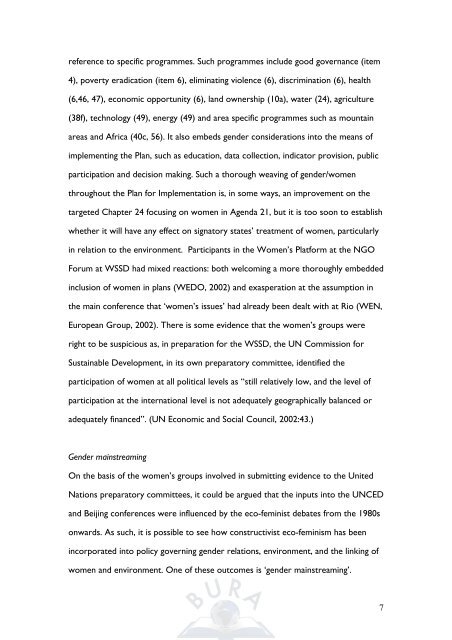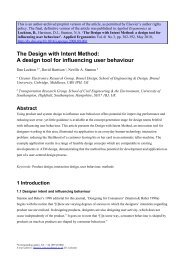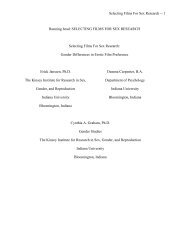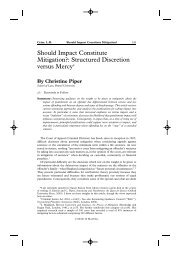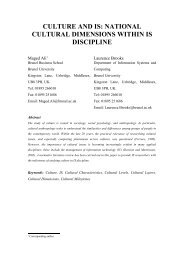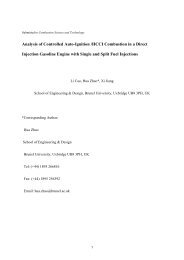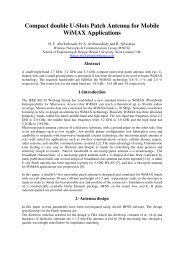Ecofeminism in the 21st Century
Ecofeminism in the 21st Century
Ecofeminism in the 21st Century
You also want an ePaper? Increase the reach of your titles
YUMPU automatically turns print PDFs into web optimized ePapers that Google loves.
eference to specific programmes. Such programmes <strong>in</strong>clude good governance (item<br />
4), poverty eradication (item 6), elim<strong>in</strong>at<strong>in</strong>g violence (6), discrim<strong>in</strong>ation (6), health<br />
(6,46, 47), economic opportunity (6), land ownership (10a), water (24), agriculture<br />
(38f), technology (49), energy (49) and area specific programmes such as mounta<strong>in</strong><br />
areas and Africa (40c, 56). It also embeds gender considerations <strong>in</strong>to <strong>the</strong> means of<br />
implement<strong>in</strong>g <strong>the</strong> Plan, such as education, data collection, <strong>in</strong>dicator provision, public<br />
participation and decision mak<strong>in</strong>g. Such a thorough weav<strong>in</strong>g of gender/women<br />
throughout <strong>the</strong> Plan for Implementation is, <strong>in</strong> some ways, an improvement on <strong>the</strong><br />
targeted Chapter 24 focus<strong>in</strong>g on women <strong>in</strong> Agenda 21, but it is too soon to establish<br />
whe<strong>the</strong>r it will have any effect on signatory states’ treatment of women, particularly<br />
<strong>in</strong> relation to <strong>the</strong> environment. Participants <strong>in</strong> <strong>the</strong> Women’s Platform at <strong>the</strong> NGO<br />
Forum at WSSD had mixed reactions: both welcom<strong>in</strong>g a more thoroughly embedded<br />
<strong>in</strong>clusion of women <strong>in</strong> plans (WEDO, 2002) and exasperation at <strong>the</strong> assumption <strong>in</strong><br />
<strong>the</strong> ma<strong>in</strong> conference that ‘women’s issues’ had already been dealt with at Rio (WEN,<br />
European Group, 2002). There is some evidence that <strong>the</strong> women’s groups were<br />
right to be suspicious as, <strong>in</strong> preparation for <strong>the</strong> WSSD, <strong>the</strong> UN Commission for<br />
Susta<strong>in</strong>able Development, <strong>in</strong> its own preparatory committee, identified <strong>the</strong><br />
participation of women at all political levels as “still relatively low, and <strong>the</strong> level of<br />
participation at <strong>the</strong> <strong>in</strong>ternational level is not adequately geographically balanced or<br />
adequately f<strong>in</strong>anced”. (UN Economic and Social Council, 2002:43.)<br />
Gender ma<strong>in</strong>stream<strong>in</strong>g<br />
On <strong>the</strong> basis of <strong>the</strong> women’s groups <strong>in</strong>volved <strong>in</strong> submitt<strong>in</strong>g evidence to <strong>the</strong> United<br />
Nations preparatory committees, it could be argued that <strong>the</strong> <strong>in</strong>puts <strong>in</strong>to <strong>the</strong> UNCED<br />
and Beij<strong>in</strong>g conferences were <strong>in</strong>fluenced by <strong>the</strong> eco-fem<strong>in</strong>ist debates from <strong>the</strong> 1980s<br />
onwards. As such, it is possible to see how constructivist eco-fem<strong>in</strong>ism has been<br />
<strong>in</strong>corporated <strong>in</strong>to policy govern<strong>in</strong>g gender relations, environment, and <strong>the</strong> l<strong>in</strong>k<strong>in</strong>g of<br />
women and environment. One of <strong>the</strong>se outcomes is ‘gender ma<strong>in</strong>stream<strong>in</strong>g’.<br />
7


